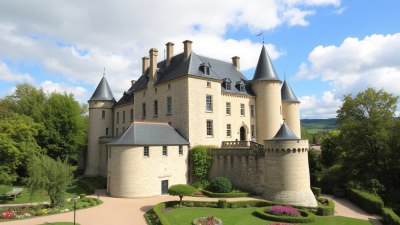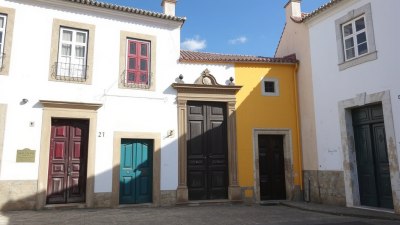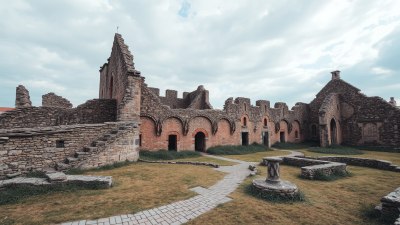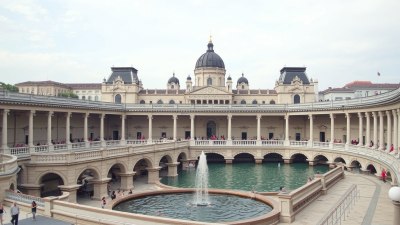The Quiet Weight of History in Tartu, Estonia
Explore the rich history and cultural significance of Tartu, Estonia, a gateway to the past.
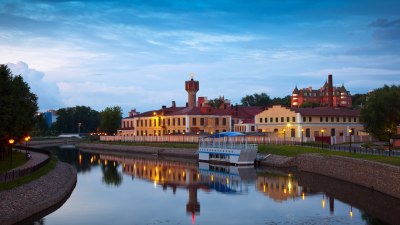
Image created with Flux Schnell
Tartu, Estonia's second-largest city, is a place where history lingers in the air, whispering tales of its past to those who wander its cobbled streets. Founded in the early Middle Ages, Tartu has undergone numerous transformations, from a Hanseatic town to a bustling university hub. Its historical significance is felt profoundly, not just in its architecture but also in the vibrant cultural tapestry that defines this charming city.
One of Tartu's most notable landmarks is the University of Tartu, established in 1632. The university is deeply intertwined with the city’s identity and has played a crucial role in shaping Estonia's intellectual life. It epitomizes Tartu's dedication to knowledge and education, attracting students and scholars from around the globe. The university's main building, a beautiful classicist structure, stands proudly on Toome Hill, serving as a reminder of the city's long-standing commitment to learning and enlightenment.
The Influence of Architecture
The architectural landscape of Tartu reflects its storied past. The city boasts a blend of styles, from medieval to modernist, showcasing its evolution through the ages. A stroll through the Old Town reveals the striking Tartu Cathedral, which dates back to the 13th century. Though now in ruins, its remnants speak volumes about the city’s historical significance as a religious center. Adjacent to the cathedral lies Toome Hill, a popular gathering place that offers stunning views of the city and a glimpse into its layered history.
The historical center is adorned with charming wooden houses and cobblestone streets that transport visitors back in time. The aesthetics of these buildings tell stories of resilience, reflecting how Tartu has adapted and grown through various socio-political changes. The graffiti and murals that adorn many of the walls serve as a testament to contemporary Tartu's vibrant cultural scene, merging past with present.
Cultural Heritage and Identity
Tartu's cultural identity is deeply rooted in its history. As the birthplace of the Estonian national awakening, the city has been a focal point for cultural movements and the promotion of Estonian language and literature. This is embodied in the Tartu Peace Treaty, signed in 1920, which marked the establishment of Estonia as an independent nation. This treaty remains a symbol of national pride and resilience.
The city hosts the Estonian National Museum, which is dedicated to the preservation and presentation of Estonia's cultural heritage. The museum's exhibits delve into the nation's history, folklore, and traditions, allowing visitors to connect with the rich narratives that have shaped Estonia. The building itself is a modern architectural feat, contrasting with the historical elements of the city while serving as a bridge between the old and new.
Festivals and Community
Throughout the year, Tartu comes alive with various festivals and events that celebrate its unique history and cultural landscape. One of the most important events is the Tartu City Festival, which features music, art, and performance, drawing thousands of visitors. This festival highlights the vibrant spirit of the city and showcases the local talent that flourishes in Tartu.
The city is also home to several cultural institutions, including theaters, galleries, and performing arts venues, reflecting its commitment to the arts. The vibrant art scene not only celebrates the past but also embraces contemporary creativity, making Tartu a dynamic space for innovation and expression.
The Legacy of War and Peace
Tartu's history is not without its challenges. The city has witnessed its share of wars and conflicts, profoundly impacting its development and character. The scars of these events can still be seen in the architectural remnants and memorials scattered throughout the city. The War of Independence and the impact of World War II have left lasting impressions on Tartu's landscape and its people.
Memorials and monuments serve as poignant reminders of the sacrifices made during tumultuous times. They offer moments for reflection and reverence, inviting both locals and visitors to confront the weight of history that rests upon the city. This contemplation is vital for understanding the collective memory of Tartu and its role in Estonia's broader narrative.
The Modern Tartu
Today, Tartu is a city that embraces its past while looking toward the future. It is a thriving academic and cultural center, filled with lively cafes, innovative start-ups, and significant research institutions. The juxtaposition of old and new is evident in the city's bustling atmosphere, where students and locals mingle in a vibrant mosaic of ideas and experiences.
In recent years, Tartu has gained recognition as a European City of Culture, celebrated for its artistic endeavors and commitment to cultural exchange. This recognition has further solidified its role as a beacon of creativity and innovation, attracting international attention and fostering a sense of community among diverse groups.
Discovering Tartu
For those looking to explore Tartu's rich history and vibrant present, a visit to the city is a journey through time. Strolling along its picturesque streets, engaging with its cultural institutions, and participating in local events offers a firsthand experience of Tartu's unique character. The warmth of its community and the depth of its historical narratives make Tartu a destination worth exploring.
Visitors to Tartu can also enjoy its stunning natural beauty, with nearby parks and the Emajõgi River providing opportunities for outdoor activities and relaxation. The natural environment complements the urban landscape, creating a harmonious balance that enhances the city’s allure.
Tartu stands as a testament to Estonia's resilience and cultural richness. The quiet weight of its history, echoed in its architecture, institutions, and community, invites exploration and reflection. Tartu is a place where the past is not forgotten but is interwoven with the present, creating a dynamic space that continues to evolve.
As one wanders through Tartu's enchanting streets, it becomes clear that the city is more than just a historical site; it is a living narrative of endurance, creativity, and hope. Visitors leave not only with memories of the sights and sounds of the city but also with a deeper appreciation for the historical currents that have shaped this remarkable place.
